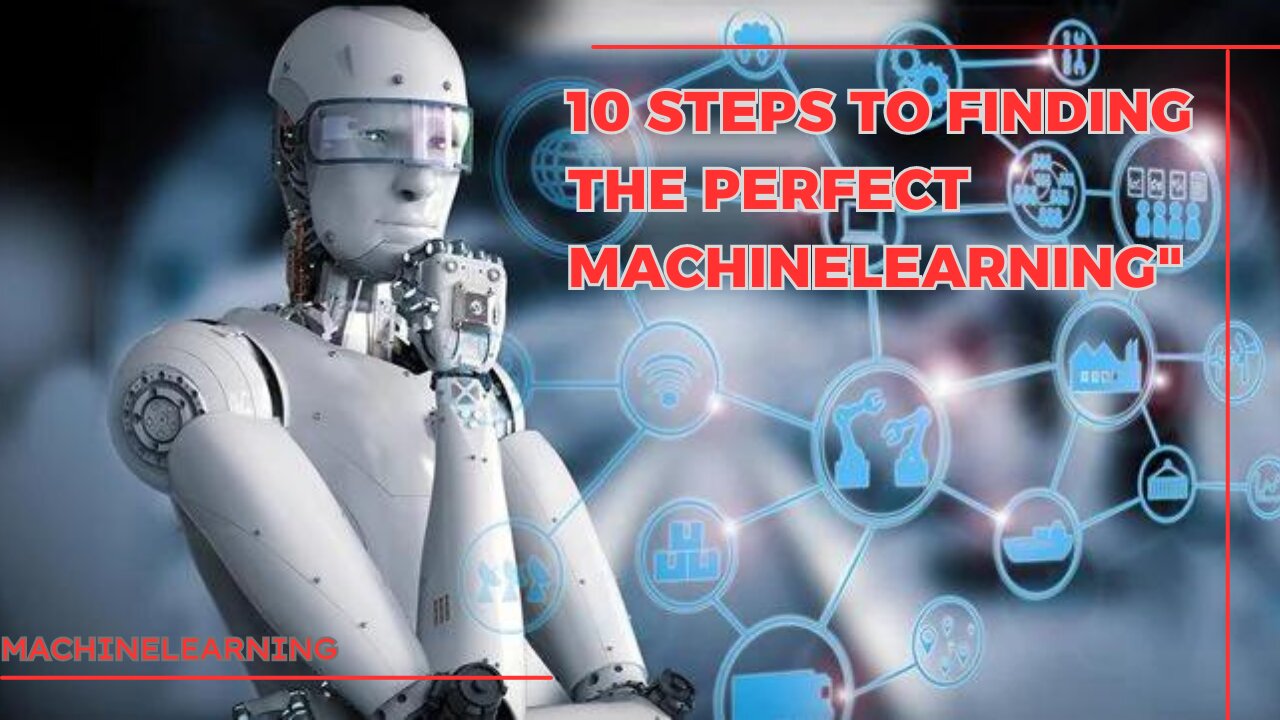Premium Only Content

10 step to finding perfect ,machinelearning
10 Steps to Finding the Perfect Machinelearning" in detail
Step 1: Define Your Problem Statement The first step to finding the perfect machine learning model is to define your problem statement. This involves understanding what you want to achieve through machine learning, what data you have available, and what your constraints are. For instance, you might want to build a model to predict customer churn, based on data about past customer behavior. Defining the problem statement clearly will help you determine which machine learning algorithm to choose.
Step 2: Collect and Prepare Data Once you have defined your problem statement, you need to collect and prepare the data for analysis. This involves gathering data from various sources, cleaning and transforming it into a format that can be used by machine learning algorithms. You need to ensure that the data is relevant, accurate, and complete, and that it represents the problem you are trying to solve.
Step 3: Choose a Machine Learning Algorithm The next step is to choose a machine learning algorithm that is best suited to solving your problem. There are several types of algorithms, including supervised, unsupervised, and reinforcement learning. Each algorithm has its own strengths and weaknesses, and the choice depends on the type of problem you are trying to solve.
Step 4: Train Your Model Once you have chosen your machine learning algorithm, you need to train your model using the data you have collected. This involves splitting the data into training and testing sets, and using the training set to teach the model how to make predictions. You need to ensure that the model is not overfitting to the training data, and that it is able to generalize well to new data.
Step 5: Evaluate Your Model After training your model, you need to evaluate its performance using the testing set. This involves measuring the accuracy, precision, recall, and F1 score of the model, as well as visualizing the results using various metrics. You need to ensure that the model is performing well, and that it is able to make accurate predictions.
Step 6: Tune Your Model If your model is not performing as well as you would like, you need to tune it using various techniques. This involves adjusting the hyperparameters of the algorithm, such as the learning rate, the number of hidden layers, and the activation functions. You also need to experiment with different algorithms, and compare their performance to find the best one.
Step 7: Validate Your Model After tuning your model, you need to validate its performance using a new set of data. This involves using the model to make predictions on a new set of data, and comparing the results to the actual values. You need to ensure that the model is able to generalize well to new data, and that it is not overfitting to the training data.
Step 8: Implement Your Model Once you have validated your model, you need to implement it in a real-world setting. This involves integrating the model into your system, and ensuring that it is able to make predictions in real-time. You also need to ensure that the model is scalable, and that it can handle large volumes of data.
Step 9: Monitor Your Model After implementing your model, you need to monitor its performance to ensure that it continues to perform well over time. This involves tracking the metrics of the model, and detecting any changes in performance that may indicate a problem. You also need to retrain the model periodically to ensure that it is up-to-date with the latest data.
Step 10: Continuously Improve Your Model Finally, you need to continuously improve your model over time, based on feedback from users and new data. This involves incorporating new features into the model, and experimenting with new algorithms and techniques. You need to ensure that the model is able to adapt to changing conditions, and that it continues to provide accurate predictions.machine learning python,machine learning tutorial,machine learning projects for beginners,machine learning tutorial python,machine learning python tutorial,machine learning python example,machine learning tutorial for beginners,artificial intelligence robot artificial intelligence robot sophia
-
 2:04:30
2:04:30
Side Scrollers Podcast
16 hours agoGold’s Gym CONTROVERSY & BOYCOTT + Craig ADMITS DEFEAT + More | Side Scrollers
4.97K7 -
 1:26:06
1:26:06
MattMorseTV
14 hours ago $0.04 earned🔴Trump's Press Conference MASSIVE UPDATE.🔴
8.22K44 -
 21:39
21:39
Nikko Ortiz
3 days agoI Take A North Korean Shooting
42.8K8 -
 LIVE
LIVE
Lofi Girl
3 years agolofi hip hop radio 📚 - beats to relax/study to
1,428 watching -
 2:14:13
2:14:13
FreshandFit
12 hours agoShe Was Given Extravagant Gifts And STILL Friendzoned Him +EXPOSED
167K30 -
 1:16:07
1:16:07
Man in America
10 hours agoOperation Gladio: The CIA, Mossad & City of London’s Plan for a New World Order
22.1K21 -
 2:11:41
2:11:41
Badlands Media
12 hours agoDEFCON ZERQ Ep. 016: Shadow Governments, Ancient Tech & the Spiritual War for Humanity
76.1K58 -
 2:09:24
2:09:24
Inverted World Live
6 hours agoRats Have Learned to Hunt Bats | Ep. 135
28.3K8 -
 2:48:01
2:48:01
TimcastIRL
7 hours agoLIVE Election Coverage: Polling Stations SWATTED, Bomb Threats Called In | Timcast IRL
245K172 -
 3:30:07
3:30:07
Barry Cunningham
7 hours agoBREAKING NEWS: COUNTDOWN TO COMMUNISM! ELECTION RESULTS SHOW!
54.7K41